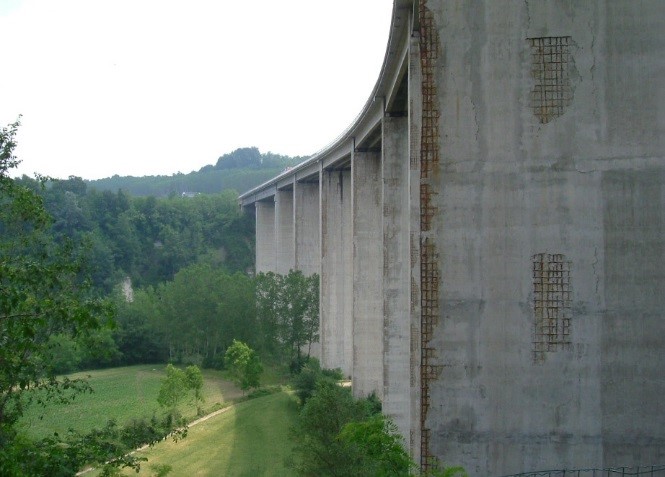- Metalnastri Anticorrosion Systems
- Via Papa Giovanni XXIII, 11/A, 20053 Rodano Millepini (Milano)
- +39 02 92592060
The Problem

Corrosion is recognized as one of the major contributors to the deterioration of reinforced and pre-stressed concrete structures worldwide. The amount of reinforced concrete structures world-wide is growing rapidly and therefore so is the increasing necessity of easily applied low-cost maintenance programs. Over the last 30 years, cathodic protection (CP) has been shown to be a highly effective technique in preventing concrete deterioration from chloride induced and carbonated concrete corrosion.
The presence of chloride based salts within the concrete can be a threat to the passivation layer (protective oxide-layer) on the carbon steel reinforcement of the concrete. Also variations in the concrete cover on top of the reinforcement, the quality of the concrete cover and the content of the chlorides around the reinforcement will cause similar corrosive circumstances. These circumstances will cause local corrosion cells. These locations are anodic. Other locations of the reinforcement, where the circumstances are relatively less corrosive and aggressive, remain passivated (passive oxide-layer). These locations are cathodic.
The combination of anodic and cathodic locations result in electrochemical reactions (redox-reactions) if the distance between the anode and cathode is relatively small. These electrochemical reactions will convert the steel of the reinforcement into iron-oxides (rust) at the anodic locations. The corrosion products formed, can be 5 to 10 times the volume of the original steel reinforcement and this will lead to pressure within the concrete which will eventually lead to cracking and spalling of the concrete cover. The loss of steel and concrete will eventually weaken the structure and be a threat to safety.


